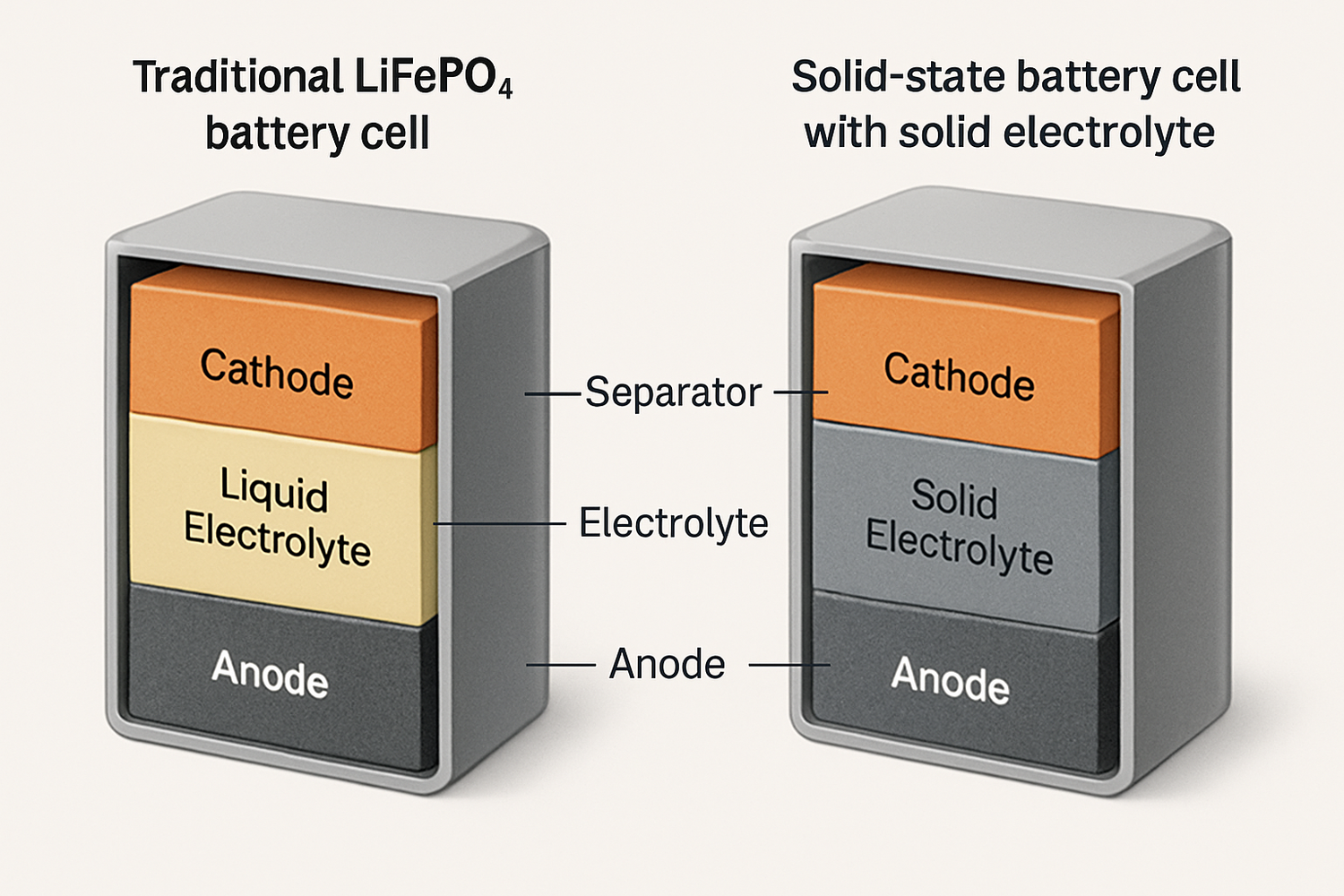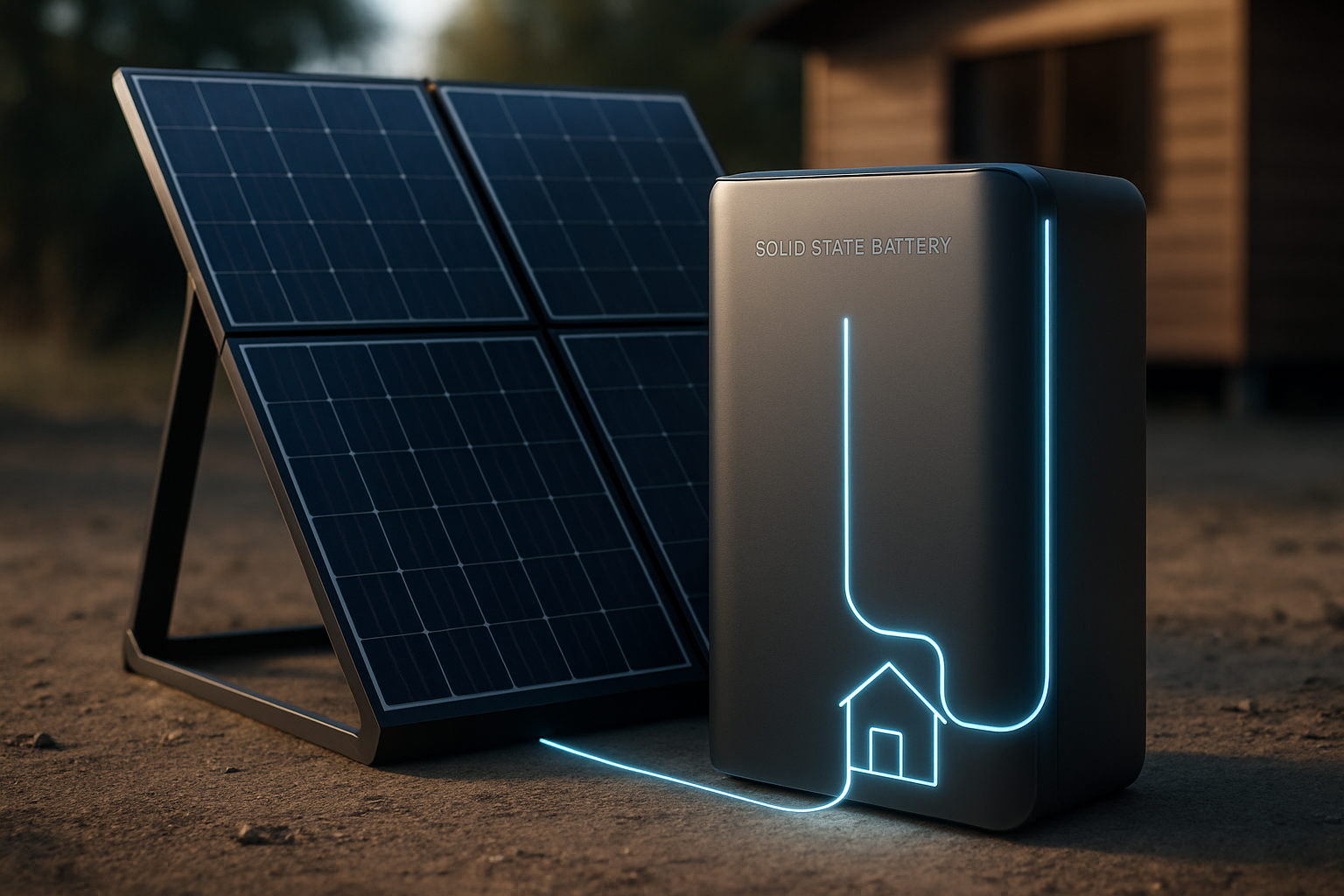Effective solar energy utilization hinges on reliable battery storage. For years, Lithium Iron Phosphate (LiFePO4) batteries have been the cornerstone of residential and off-grid solar systems, prized for their stability and longevity. Now, a new contender, solid-state battery technology, is on the horizon, promising significant advancements. This article provides a clear comparison between these two powerful technologies to illuminate the path forward for solar battery storage.
Understanding the Current Standard: The LiFePO4 Battery
Why LiFePO4 Dominates Solar Storage Today
LiFePO4 batteries, a specific type of lithium-ion battery, have earned their place as the industry standard for solar applications. Their lithium iron phosphate chemistry provides exceptional thermal stability, drastically reducing the risks associated with overheating. This inherent safety, combined with a long cycle life often exceeding 4000 cycles, makes them a trusted choice for a home battery storage system. Configurations like the popular 12v 100ah LiFePO4 lithium battery are widely used due to their reliability and consistent power output.
Performance and Limitations in Solar Applications
In practical terms, LiFePO4 batteries offer excellent performance for daily solar energy cycling. They can be deeply discharged without significant degradation and operate with high efficiency. However, they do have limitations. Their energy density is lower than other lithium-ion chemistries, meaning they are bulkier and heavier for the same capacity. Performance can also diminish in extremely cold temperatures, which requires consideration in certain climates. For a detailed look at performance metrics, reviewing an ultimate reference on solar storage performance can provide deeper insights into what to expect from current-generation technologies.
The Challenger: Solid-State Battery Technology
What Makes Solid-State Different?
The fundamental innovation of solid-state batteries is the replacement of the liquid or gel-like electrolyte found in conventional lithium-ion batteries with a solid material. This solid electrolyte, often made of ceramic or polymer materials, is not just a simple swap; it redesigns the battery's core functionality and unlocks several key advantages. This change is the primary reason for the excitement surrounding solid-state technology as a future energy storage solution.
Key Advantages Driving Development
Solid-state technology presents several compelling benefits over current battery types. The most significant is enhanced safety; by eliminating the flammable liquid electrolyte, the risk of fire is substantially reduced. Additionally, solid-state batteries promise much higher energy density, meaning they can store more energy in a smaller, lighter package. They also have the potential for a longer lifespan with more charge cycles and faster charging capabilities, making them a highly anticipated evolution in energy storage.
Head-to-Head Comparison: Solid-State vs. LiFePO4 for Solar
When evaluating both technologies for solar energy storage, a direct comparison highlights the trade-offs between the established standard and the future possibility.
| Feature | LiFePO4 Battery | Solid-State Battery |
|---|---|---|
| Safety | Very high (stable chemistry) | Potentially higher (non-flammable solid electrolyte) |
| Energy Density | Good (approx. 90-160 Wh/kg) | Very High (potential for >400 Wh/kg) |
| Lifespan (Cycle Count) | Excellent (4,000-10,000+ cycles) | Potentially superior (longer-lasting chemistry) |
| Charging Speed | Good | Potentially much faster |
| Temperature Range | Good (performance degrades in extreme cold) | Wider operating range expected |
| Current Availability & Cost | Widely available and cost-effective | In development, currently high cost |
Safety and Reliability
While LiFePO4 batteries are among the safest commercially available batteries, solid-state technology aims to improve this further. The solid electrolyte is non-combustible, which could make future energy storage solutions even more secure for residential use. According to a report from the International Renewable Energy Agency (IRENA), improving battery safety and performance is crucial for integrating renewables.
Energy Density and System Footprint
Higher energy density is a major advantage for solid-state batteries. For homeowners, this translates to a smaller physical footprint for their solar energy storage system. A solid-state lithium battery pack could offer the same capacity as a LiFePO4 system but in a much more compact and lightweight form, freeing up valuable space.
Lifespan and Long-Term Value
A longer operational life with more charge and discharge cycles means a lower overall cost of energy storage over time. LiFePO4 batteries already offer a fantastic lifespan, but solid-state technology could extend this even further, providing greater long-term value for solar system owners.
The Practical Reality: Timelines and Adoption
Why Aren't Solid-State Batteries Everywhere Yet?
Despite their immense potential, solid-state batteries face significant hurdles before widespread adoption. The primary challenges are manufacturing complexity and high production costs. Scaling up production from the lab to commercial volumes is a difficult process that researchers and companies are actively working to solve. The U.S. Department of Energy is funding projects to help overcome these manufacturing barriers and accelerate commercialization.
When Can You Expect Solid-State in Your Home?
A realistic timeline suggests that solid-state batteries will first appear in small consumer electronics and electric vehicles before becoming common in residential solar. Several manufacturers are targeting the late 2020s for initial mass production, with broader availability likely following into the 2030s. The International Energy Agency (IEA) highlights that continued innovation in battery technology is essential to meet global clean energy goals. For now, the deep cycle lithium battery based on LiFePO4 chemistry remains the most practical and accessible choice for solar storage.
Making the Right Choice for Your Energy Needs
Choosing a battery for a solar installation is a significant decision. LiFePO4 technology is the proven, reliable, and readily available choice for today's energy storage needs. It delivers an excellent balance of safety, performance, and cost, making it the go-to for countless solar energy systems worldwide. Solid-state technology represents the next frontier, promising a future of smaller, safer, and more powerful energy storage. While it is the technology to watch, current investment and installation decisions should be based on the mature and dependable LiFePO4 platform.
Frequently Asked Questions
Is a solid-state battery better than a LiFePO4 battery?
Theoretically, solid-state technology offers significant advantages in energy density, safety, and potential lifespan. However, LiFePO4 is a mature, proven, and commercially available technology that provides excellent performance and reliability for current solar energy storage systems. The 'better' choice depends on immediate availability, cost, and specific application needs.
How much more expensive are solid-state batteries?
Currently, solid-state batteries are substantially more expensive to produce than LiFePO4 batteries due to complex manufacturing processes and material costs. As the technology matures and production scales up, costs are expected to decrease, but they are not yet competitive for the residential solar storage market.
Can I upgrade my existing solar system to a solid-state battery later?
It is likely that future solid-state battery systems will be designed for compatibility with standard solar inverters and components. The modular nature of solar systems generally allows for components like batteries to be upgraded or replaced. However, the specific requirements will depend on the final product specifications when they become commercially available.





Leave a comment
All comments are moderated before being published.
This site is protected by hCaptcha and the hCaptcha Privacy Policy and Terms of Service apply.